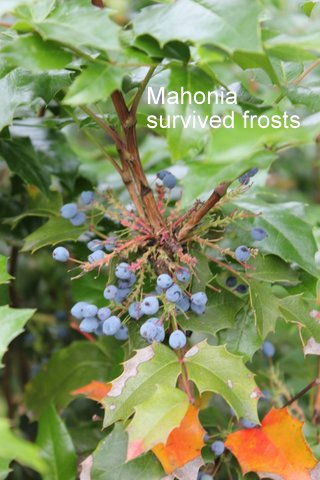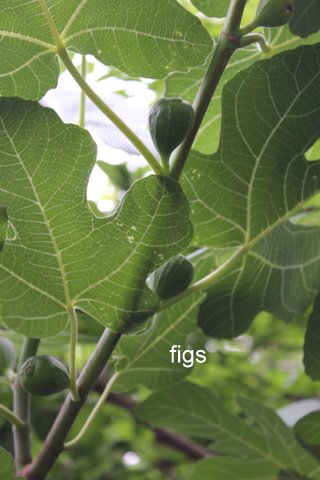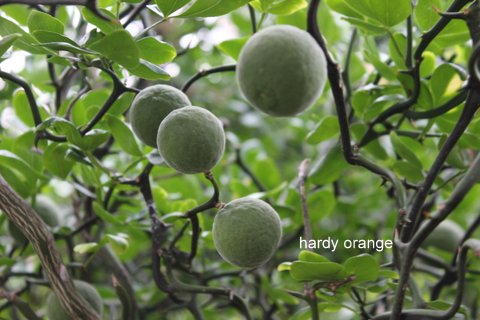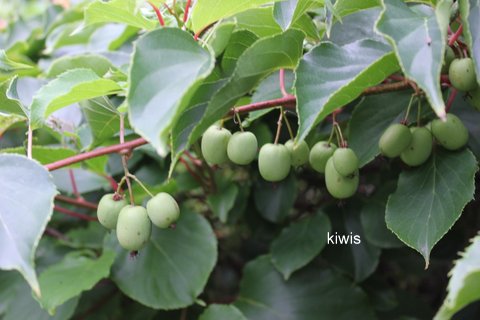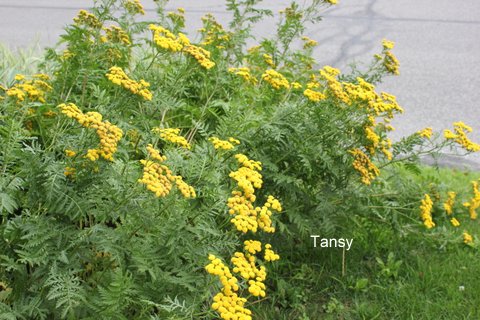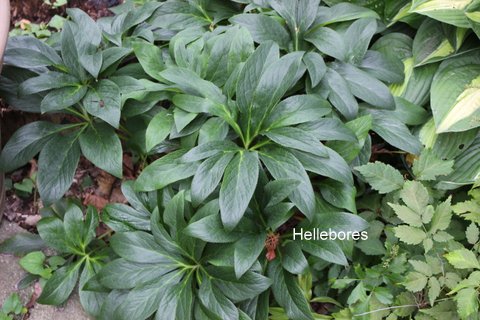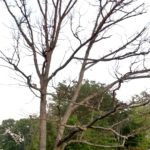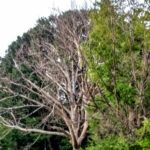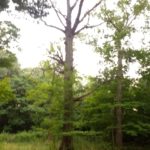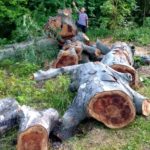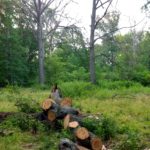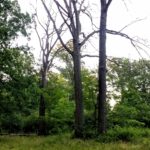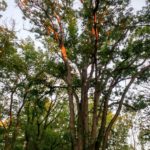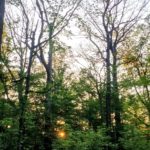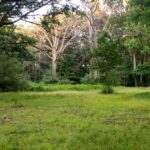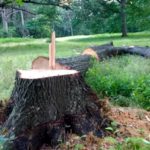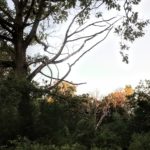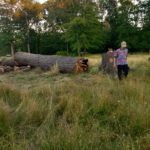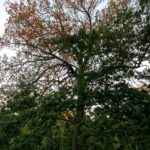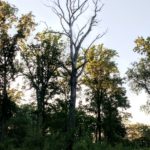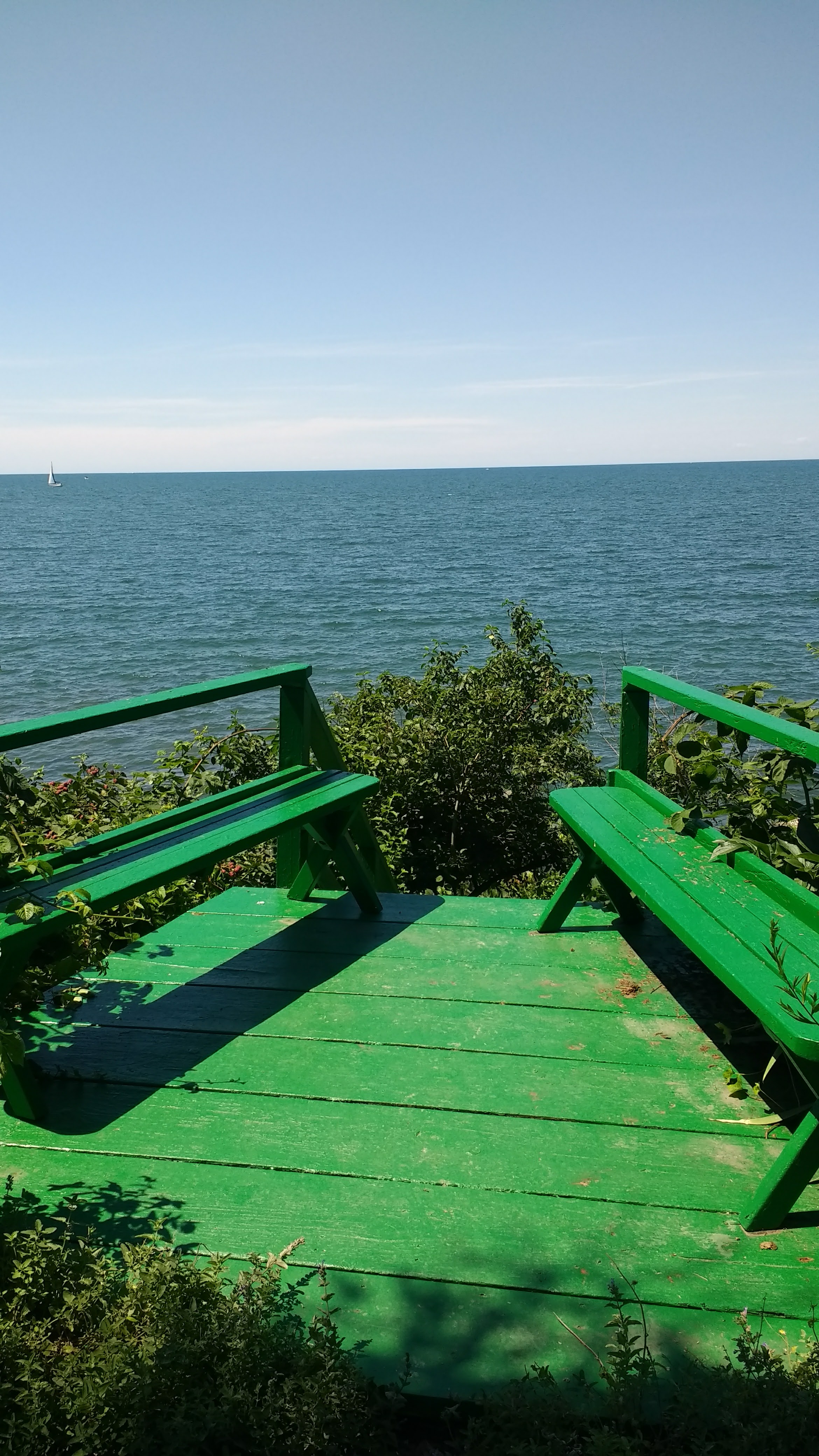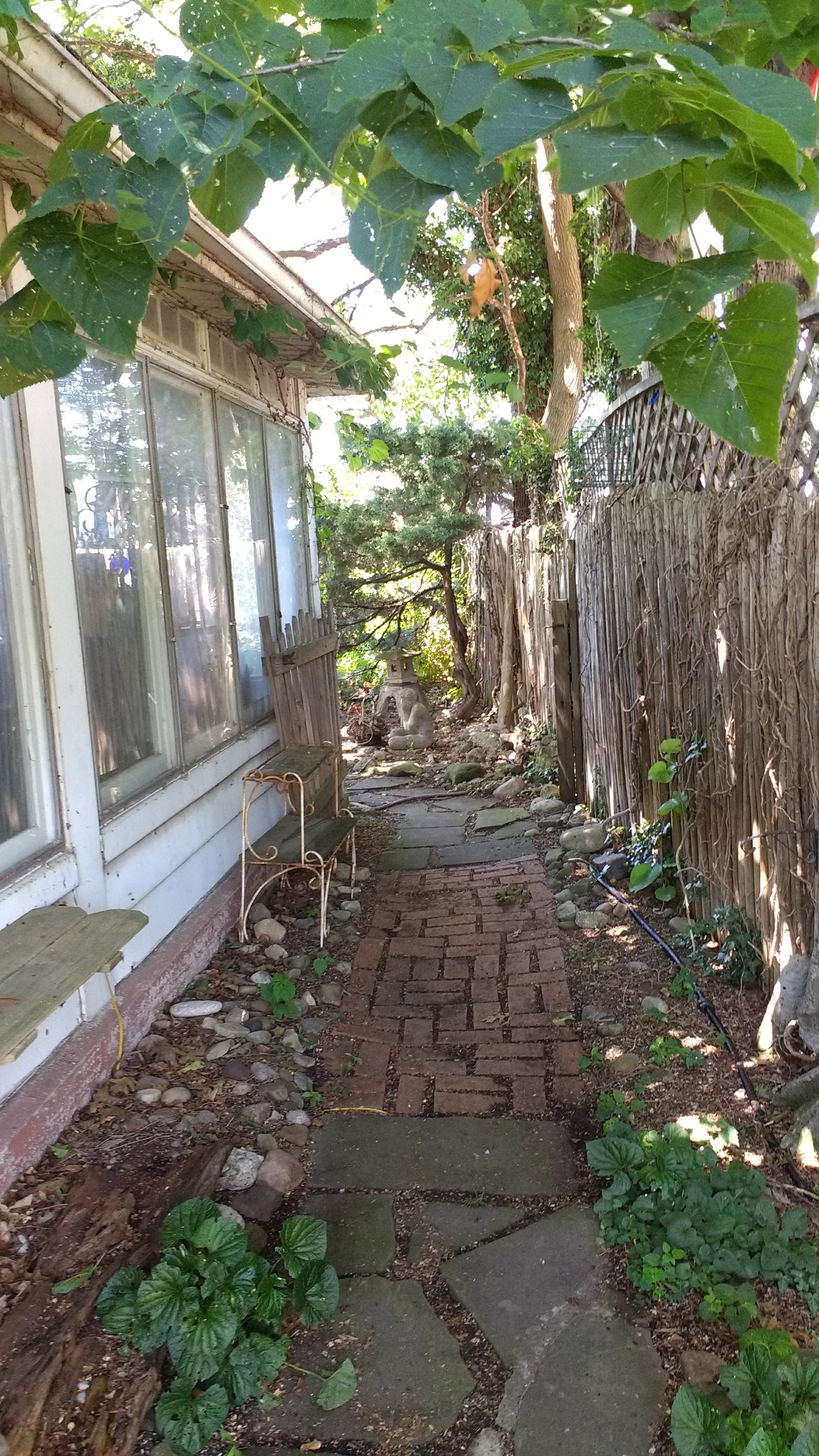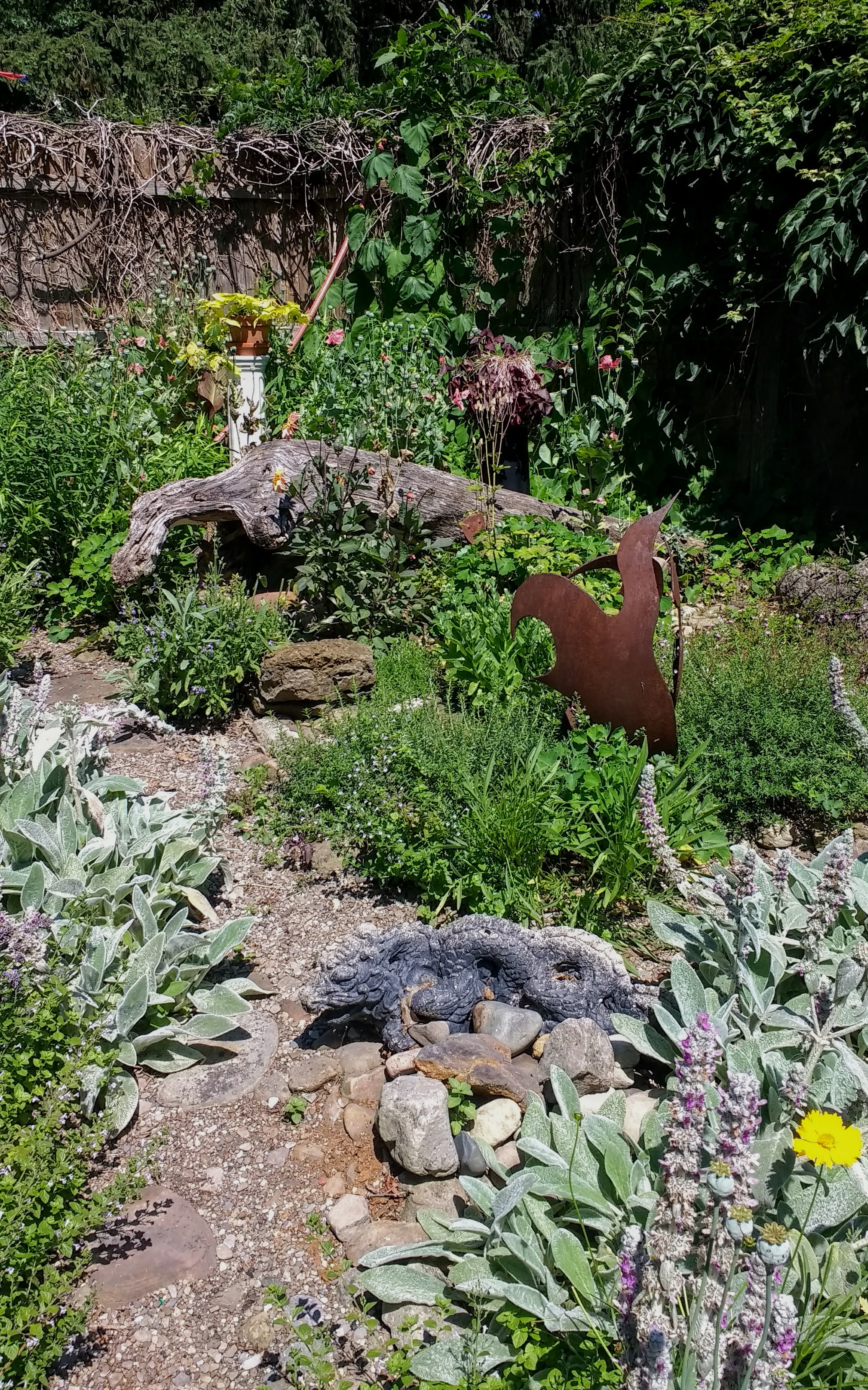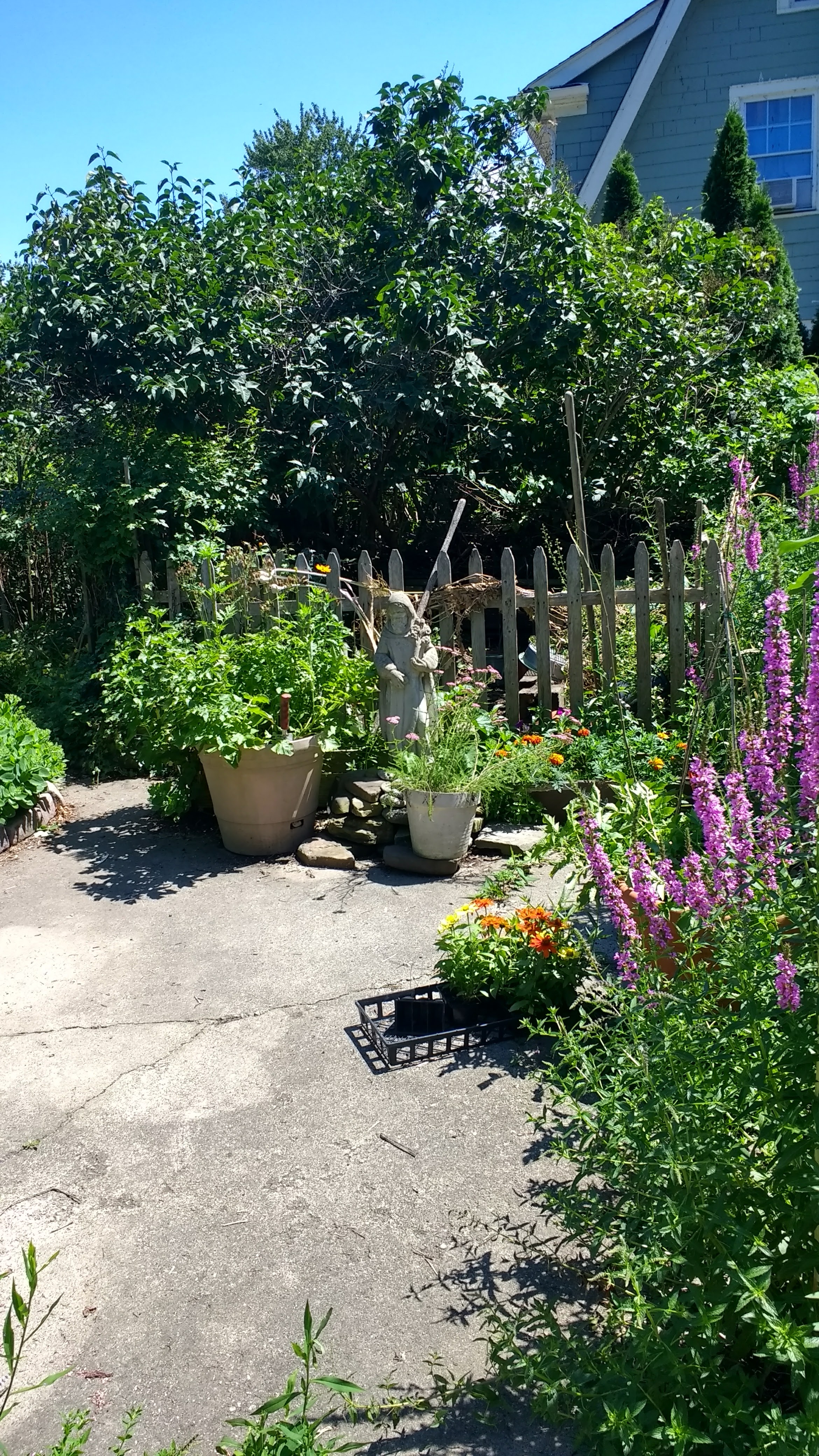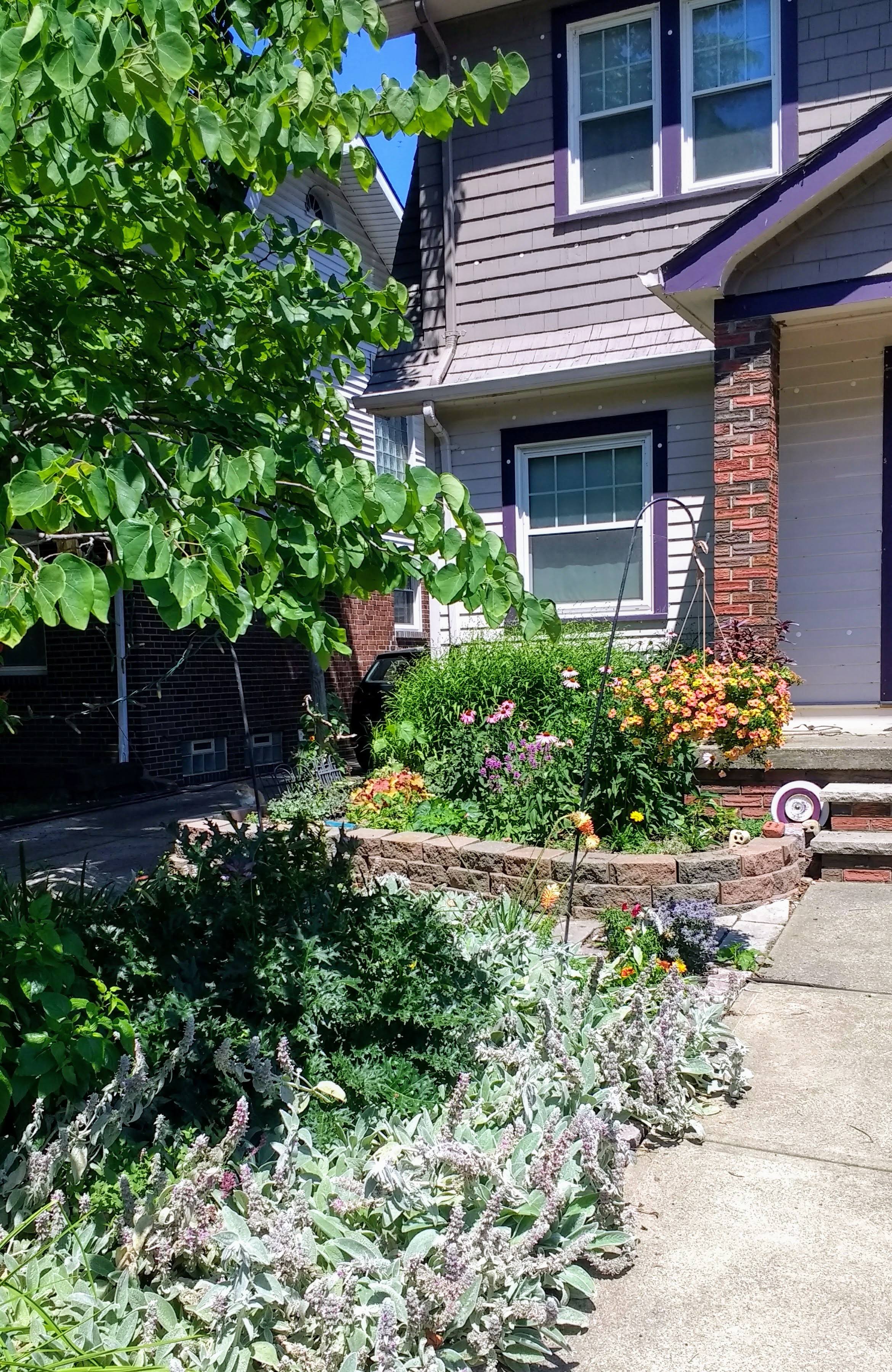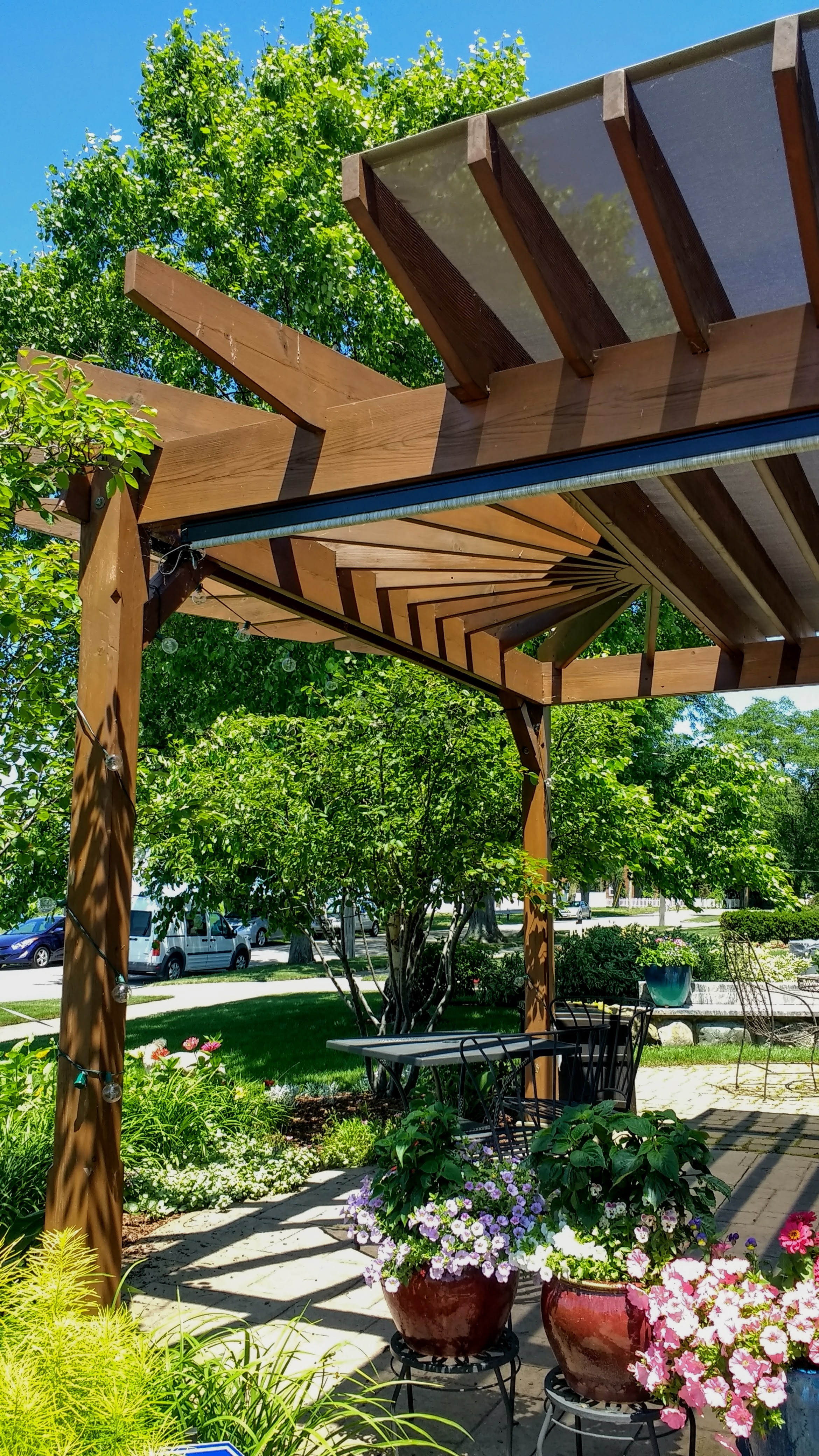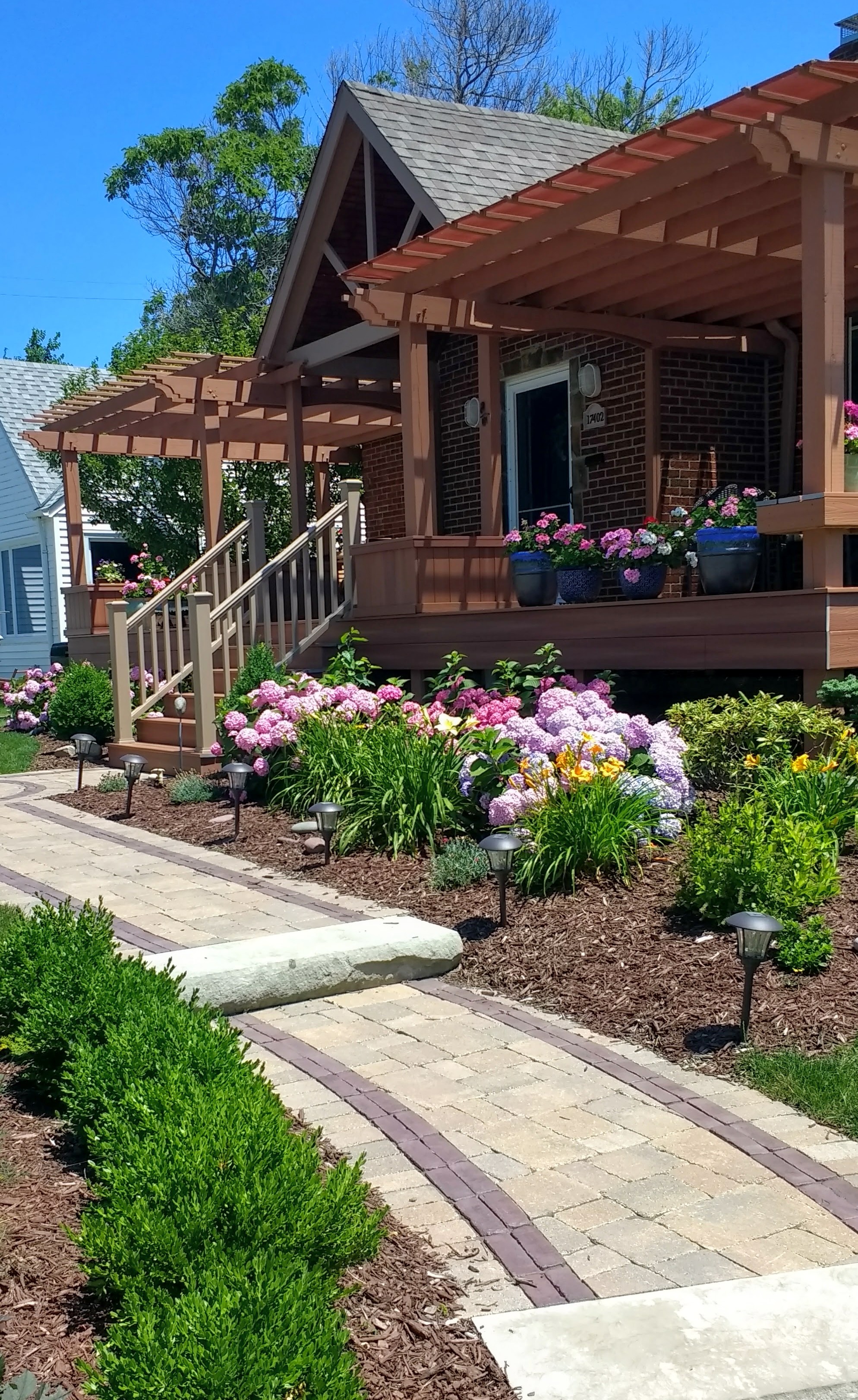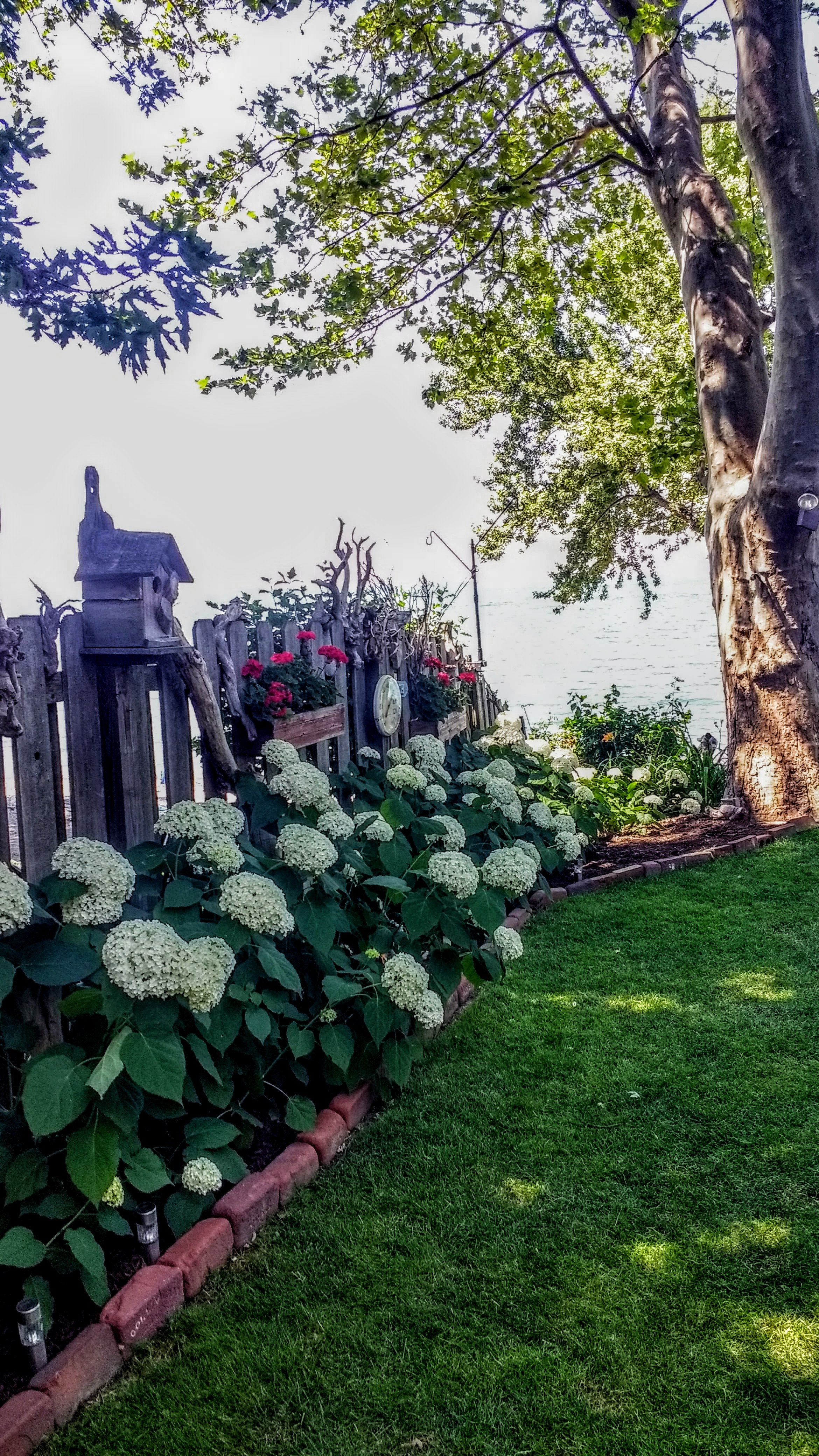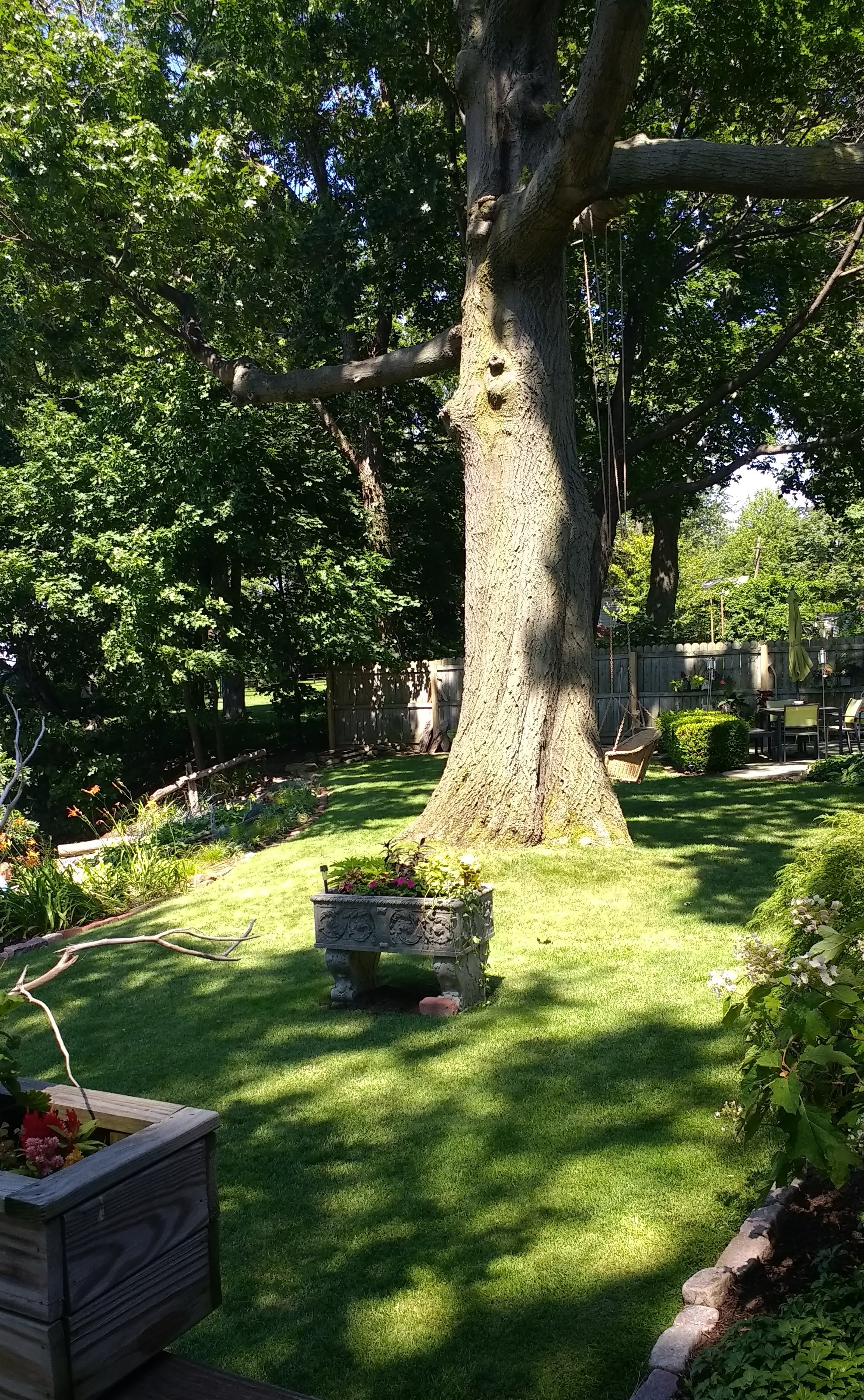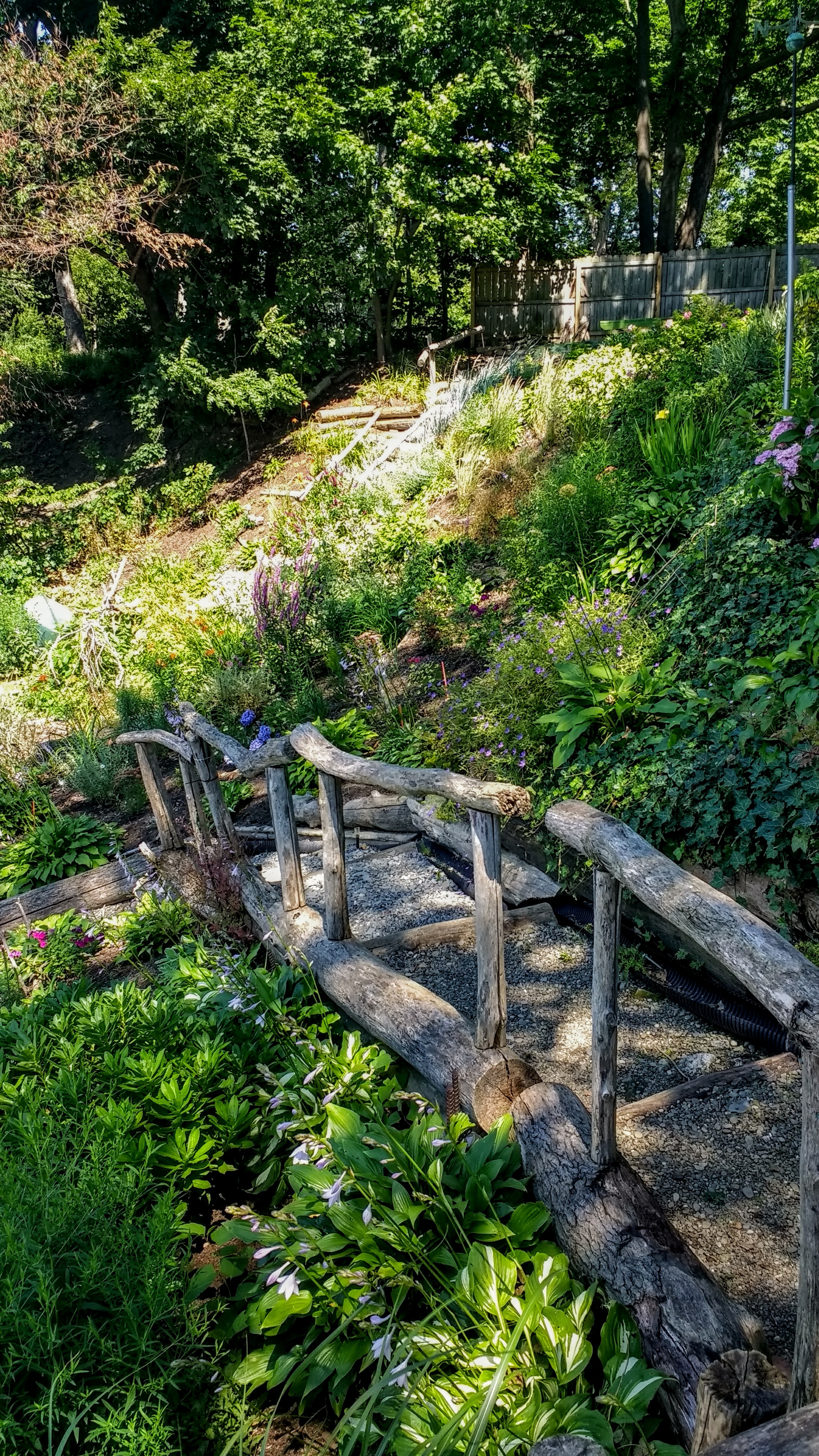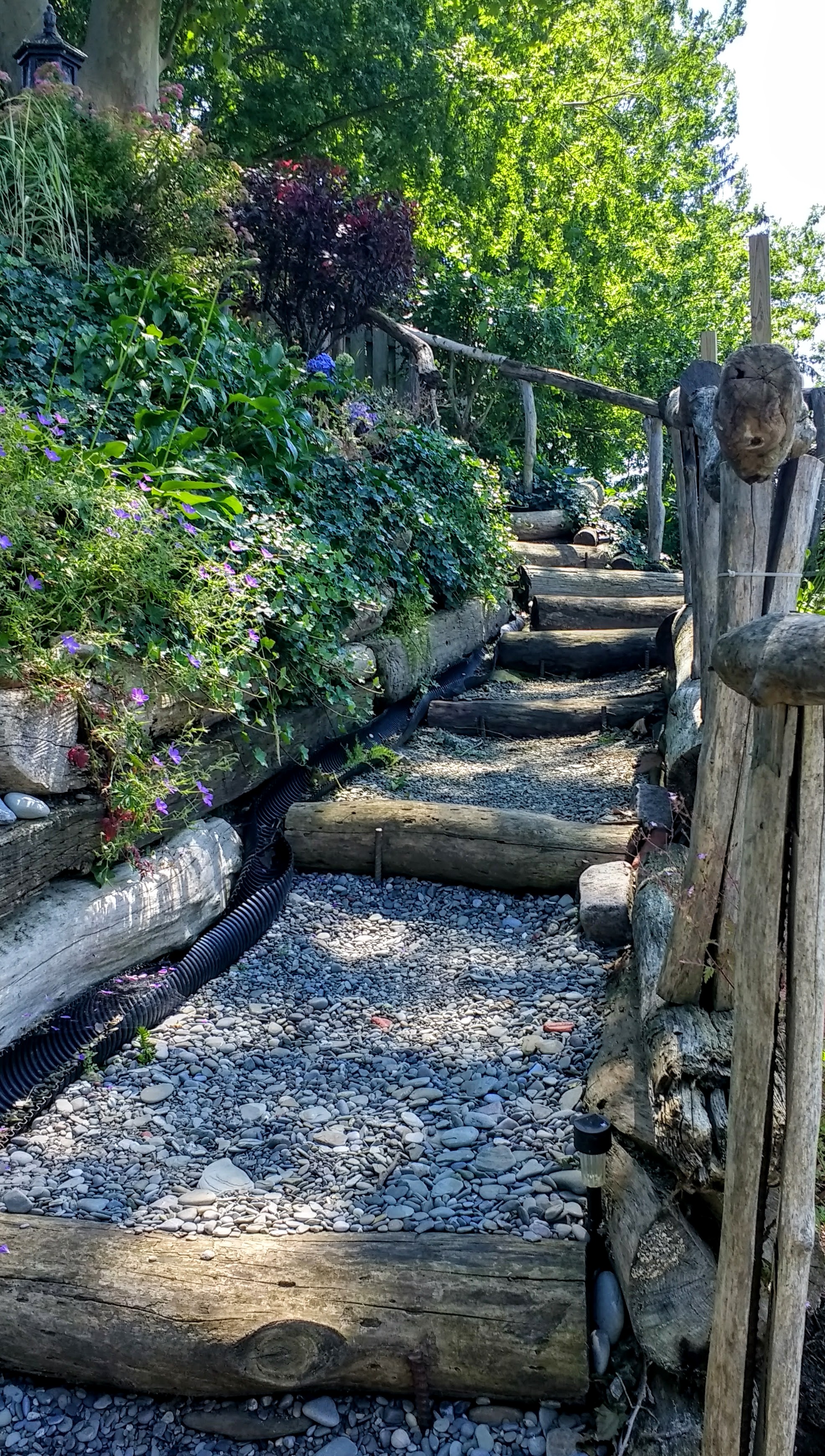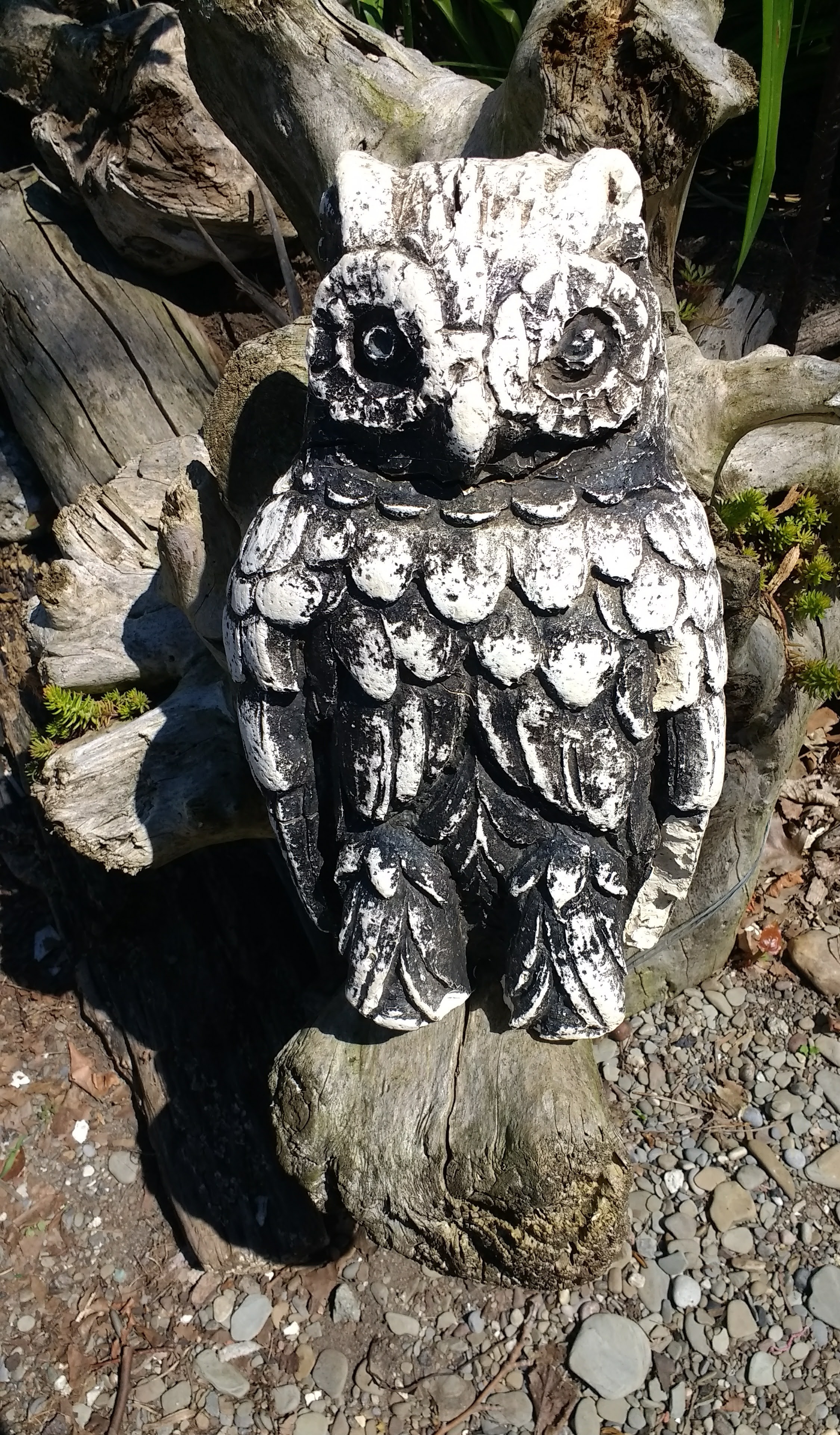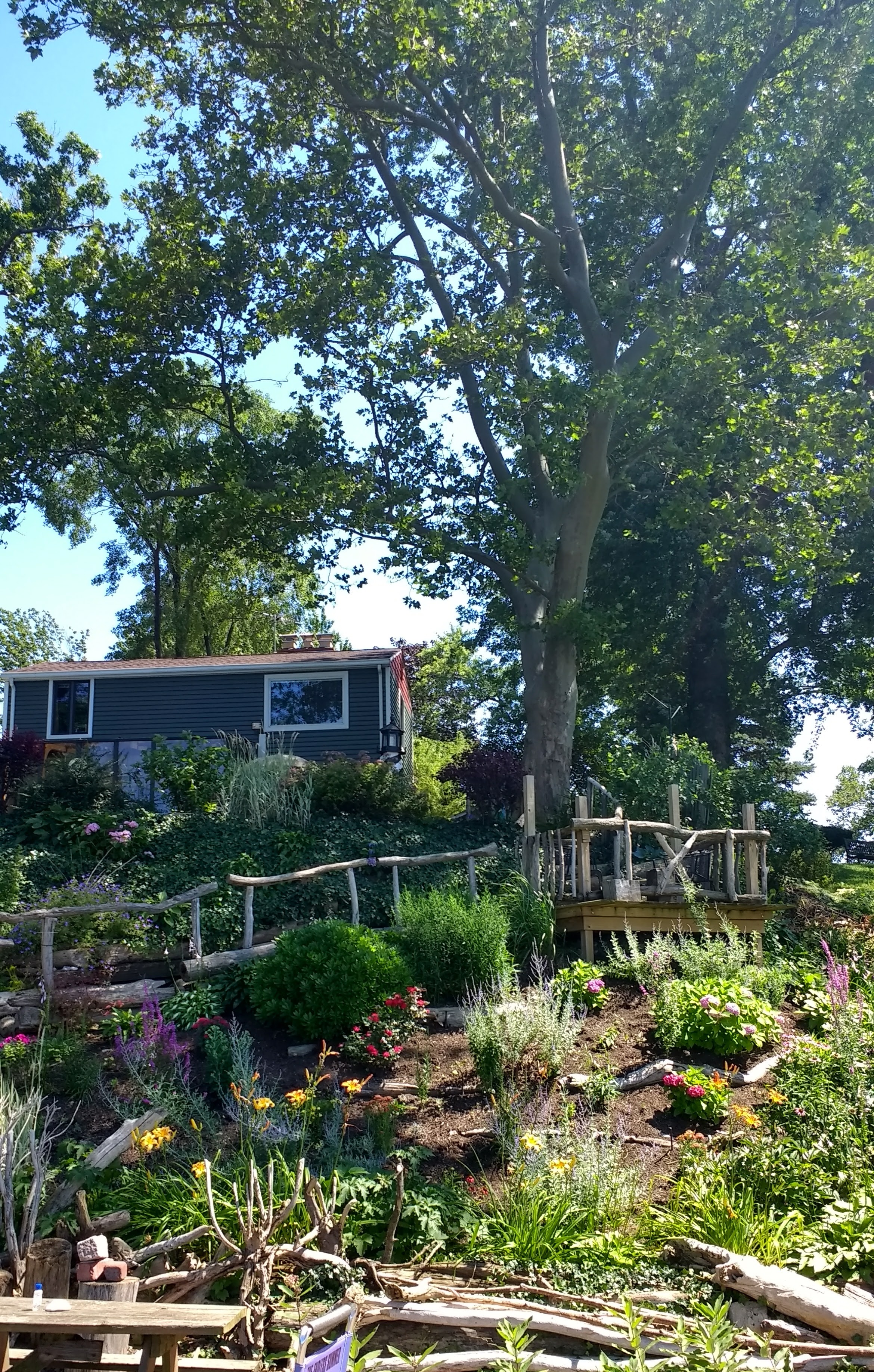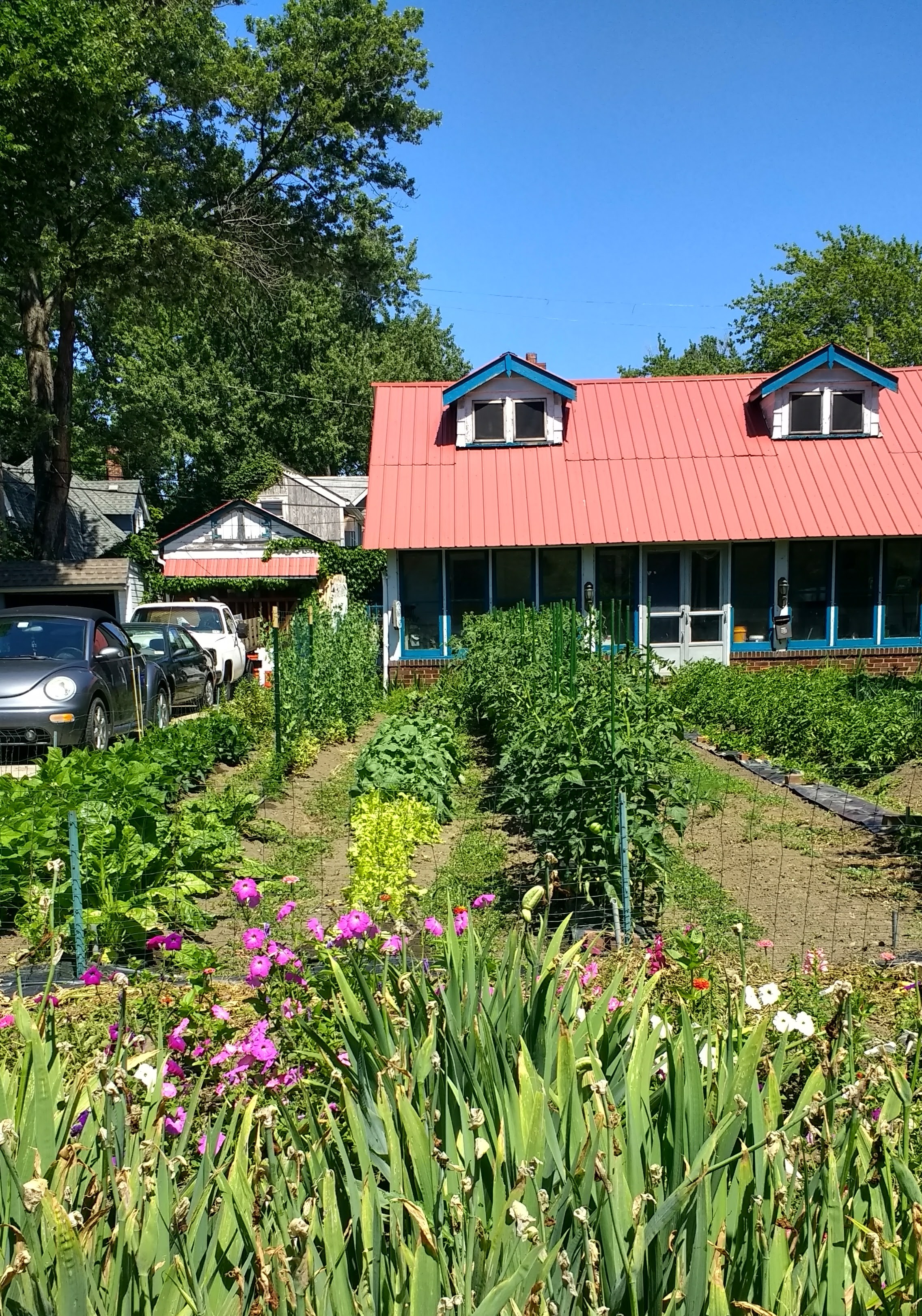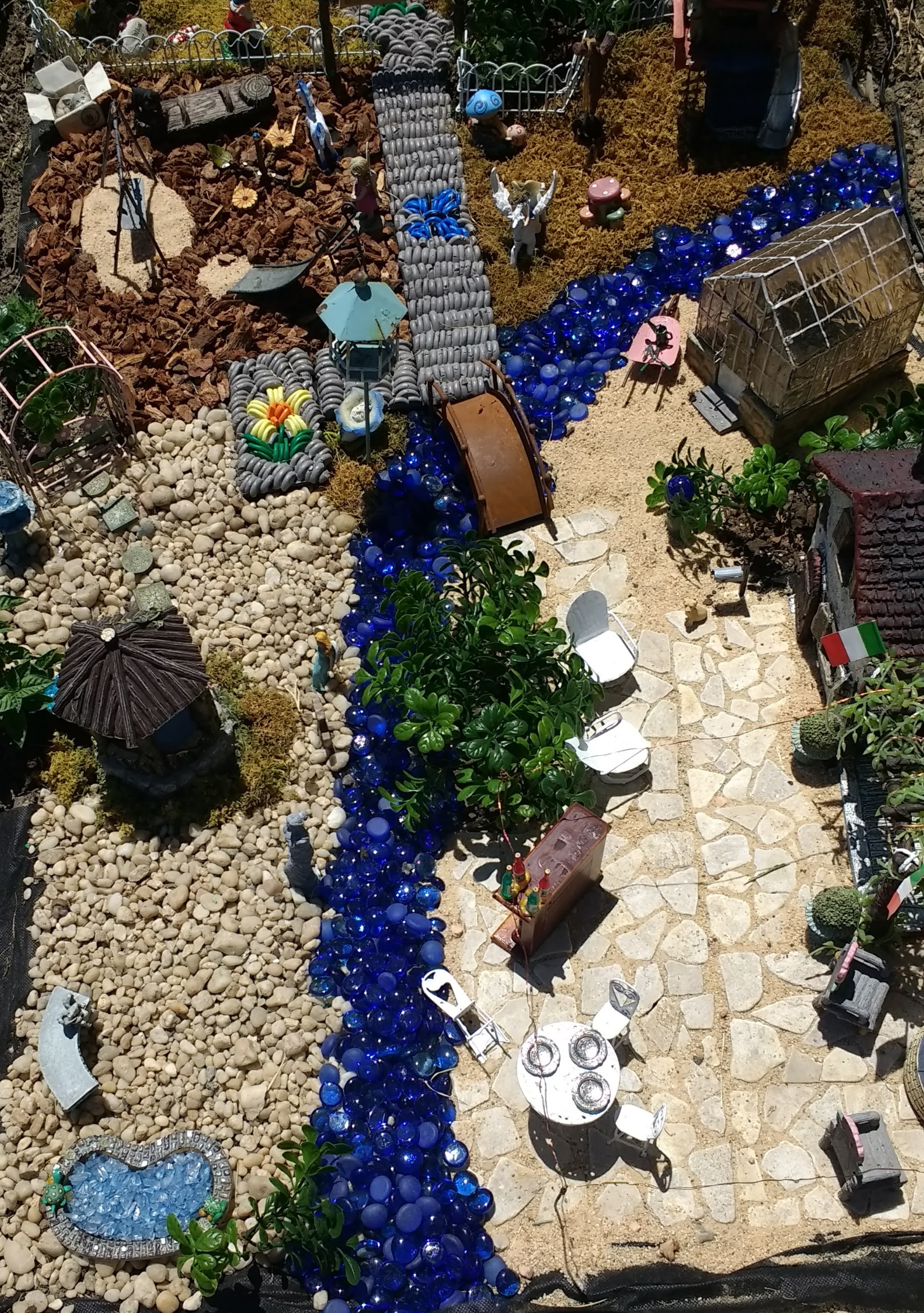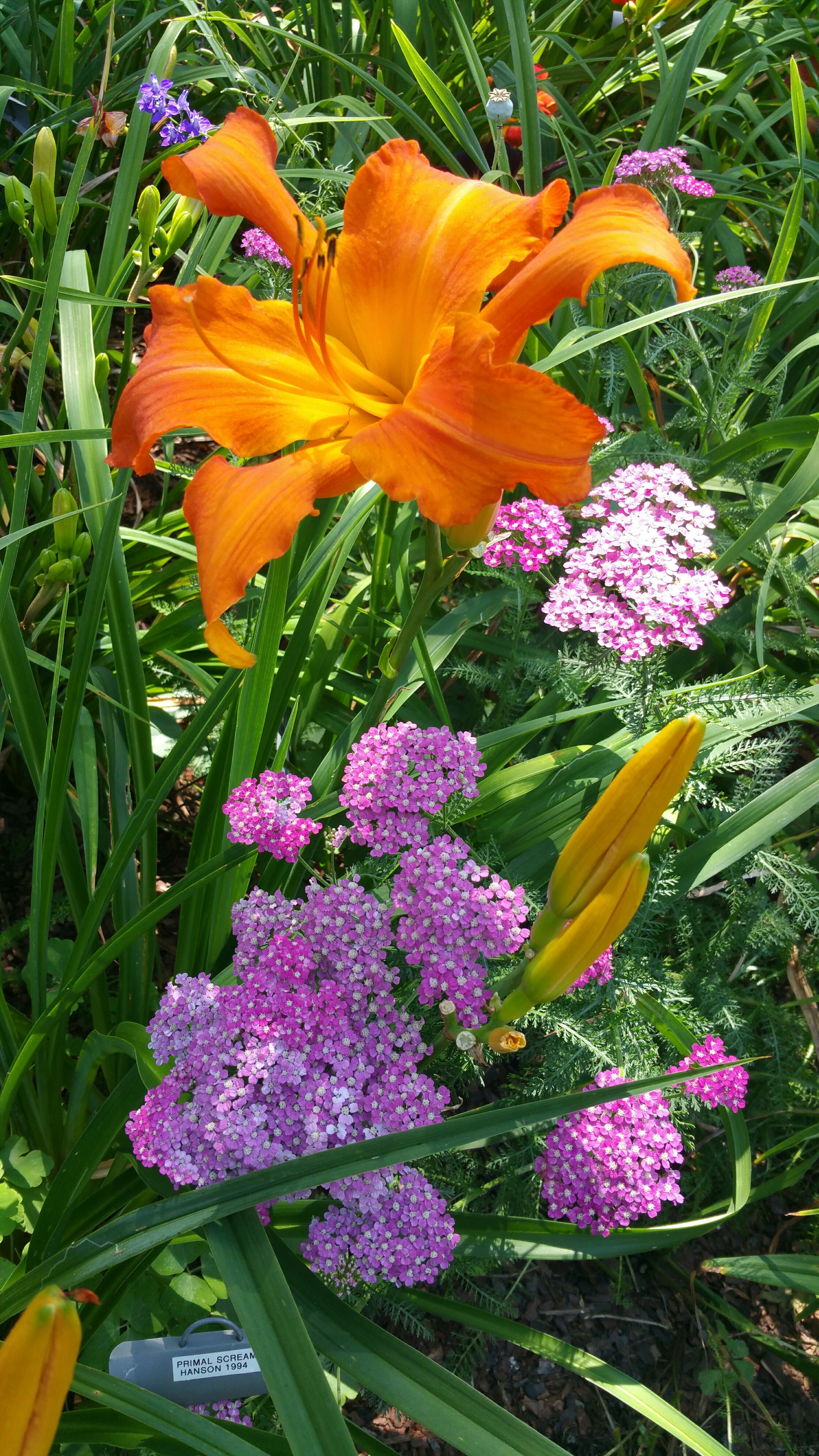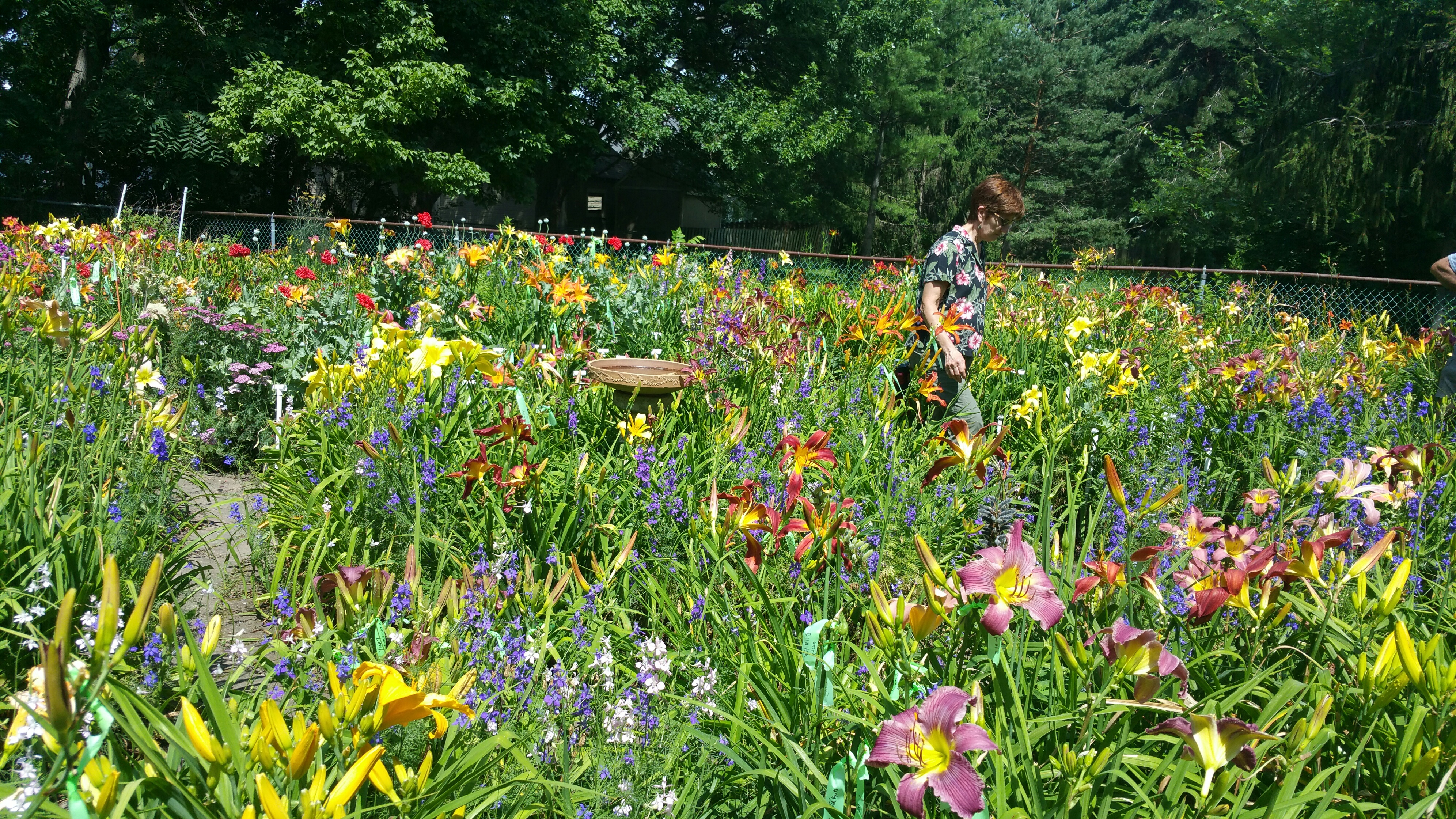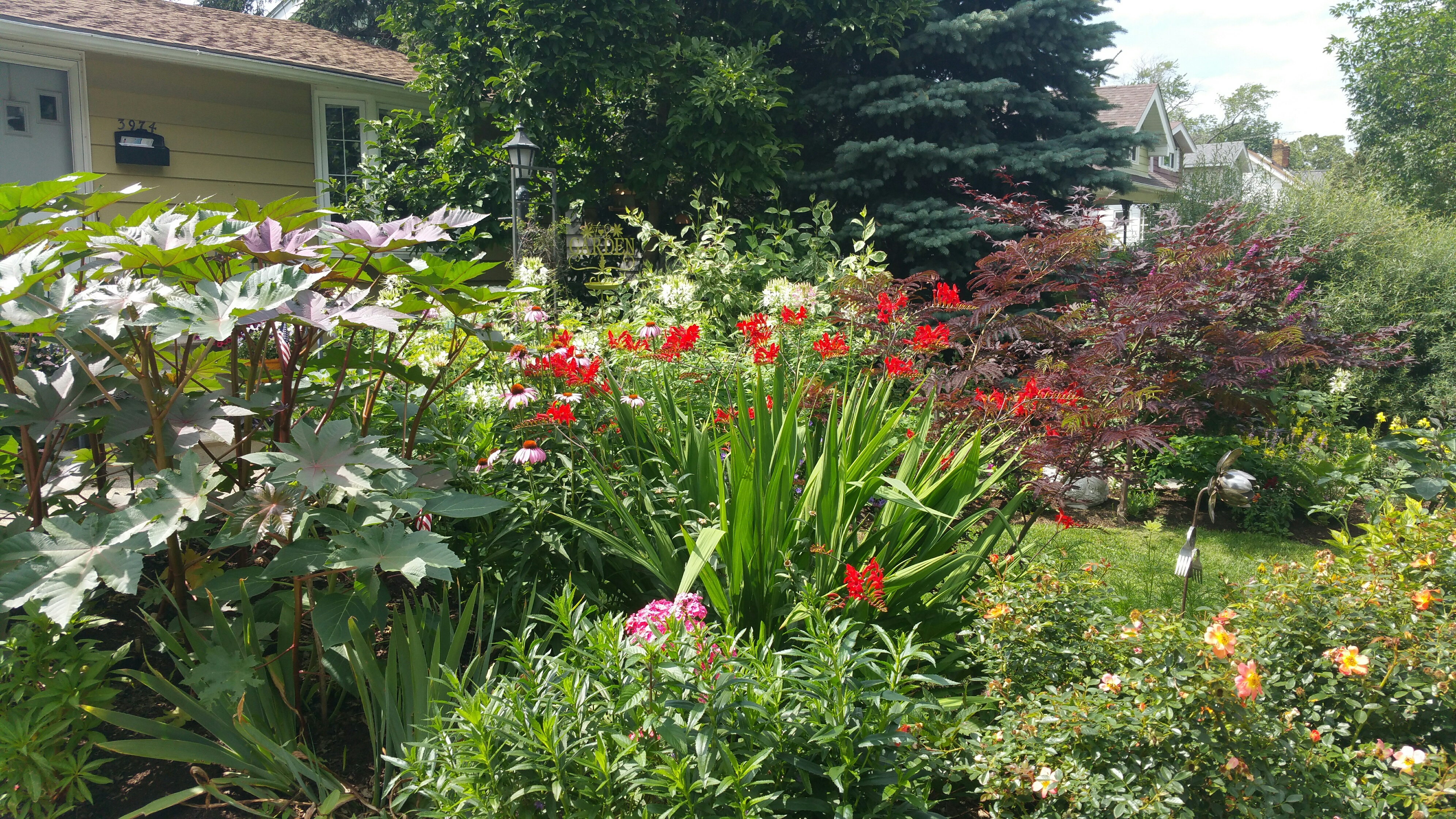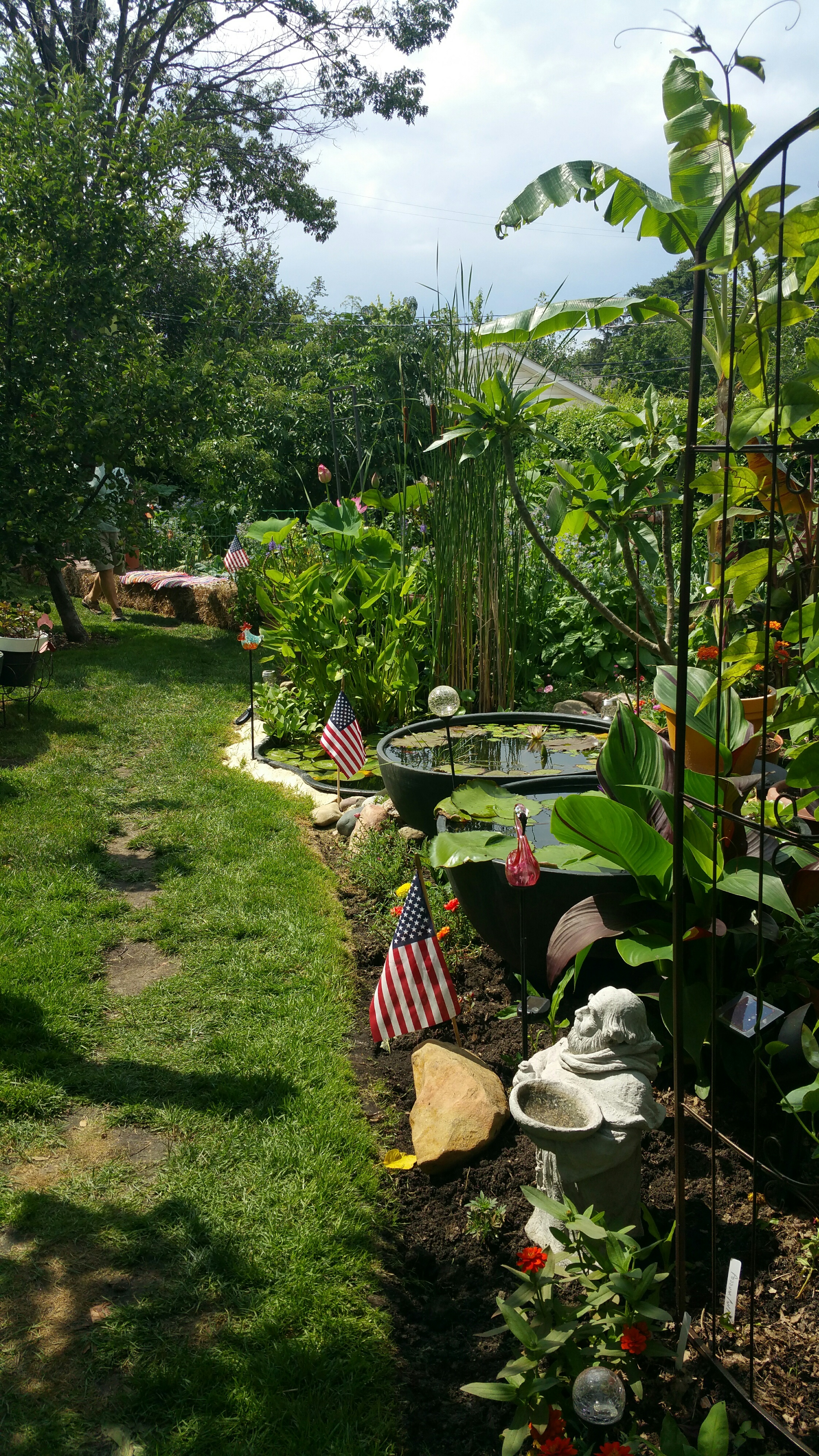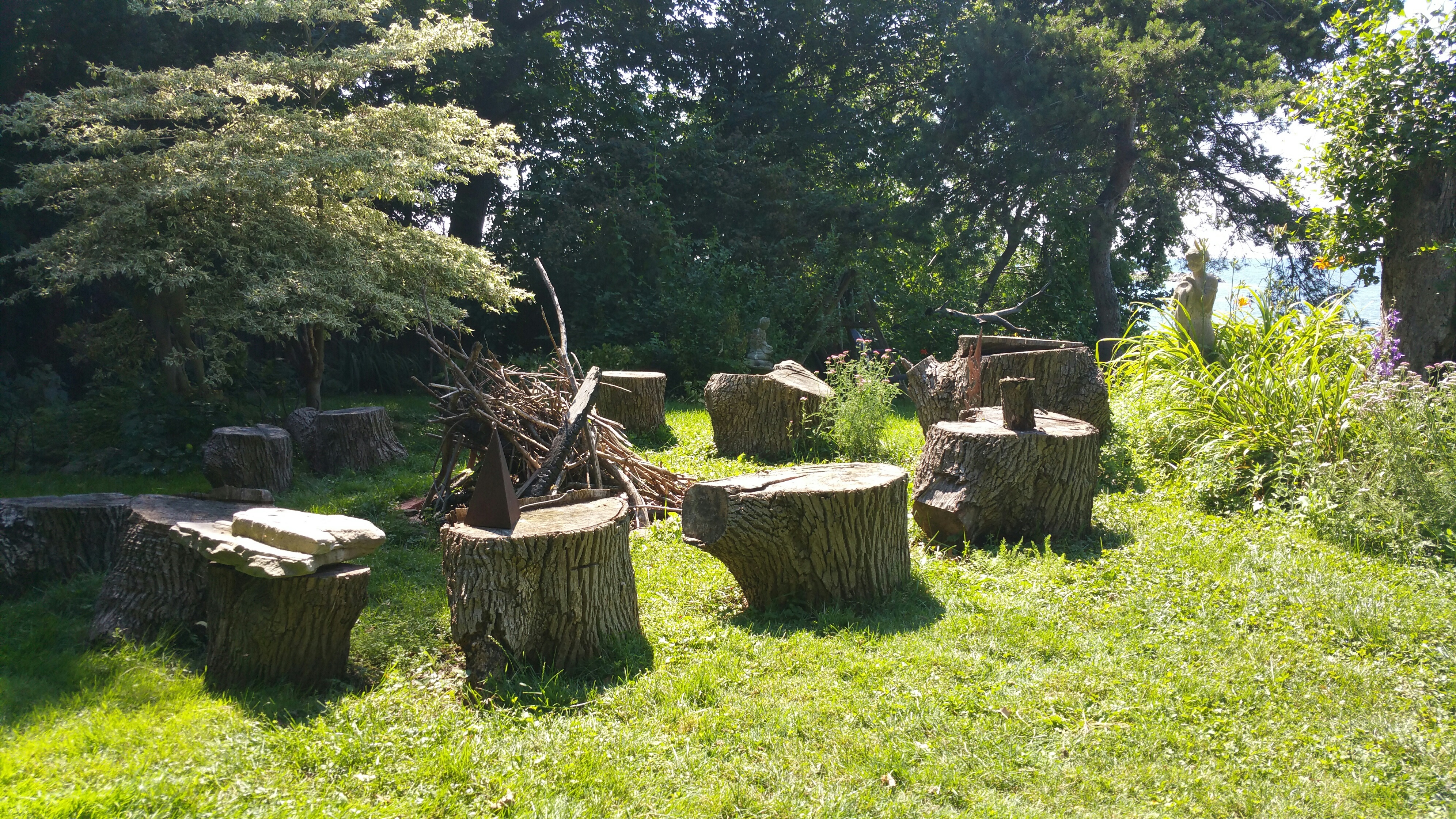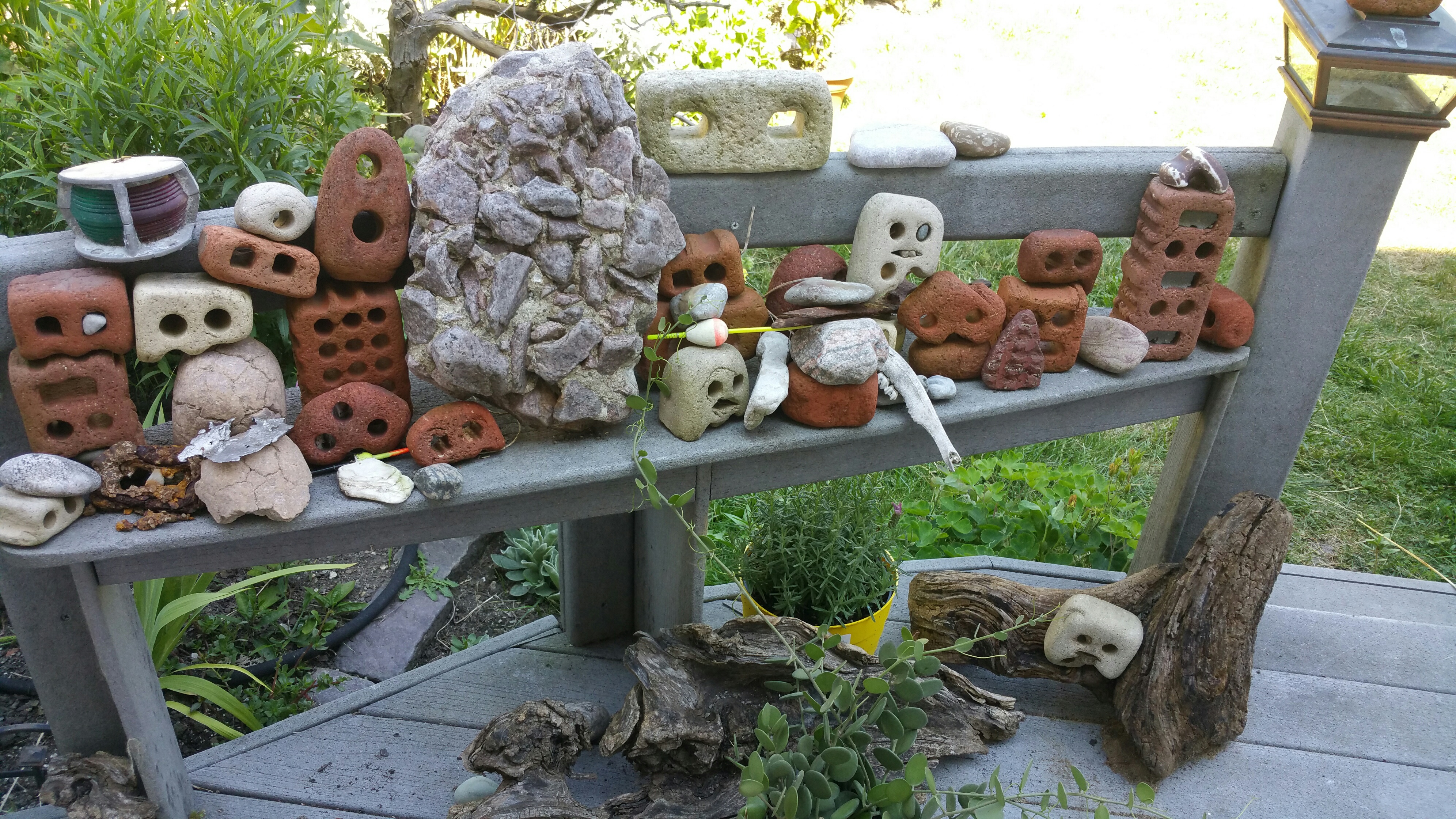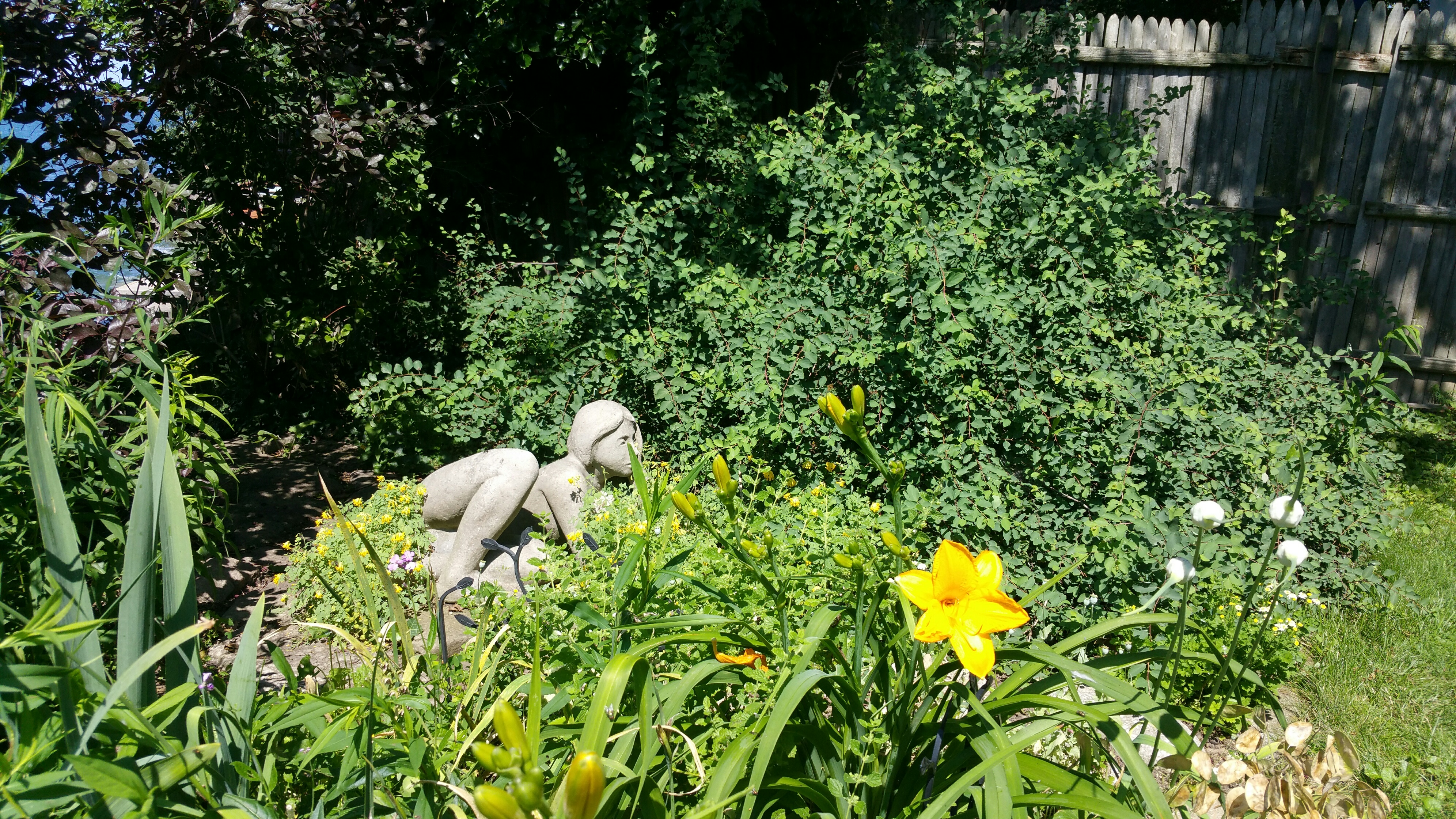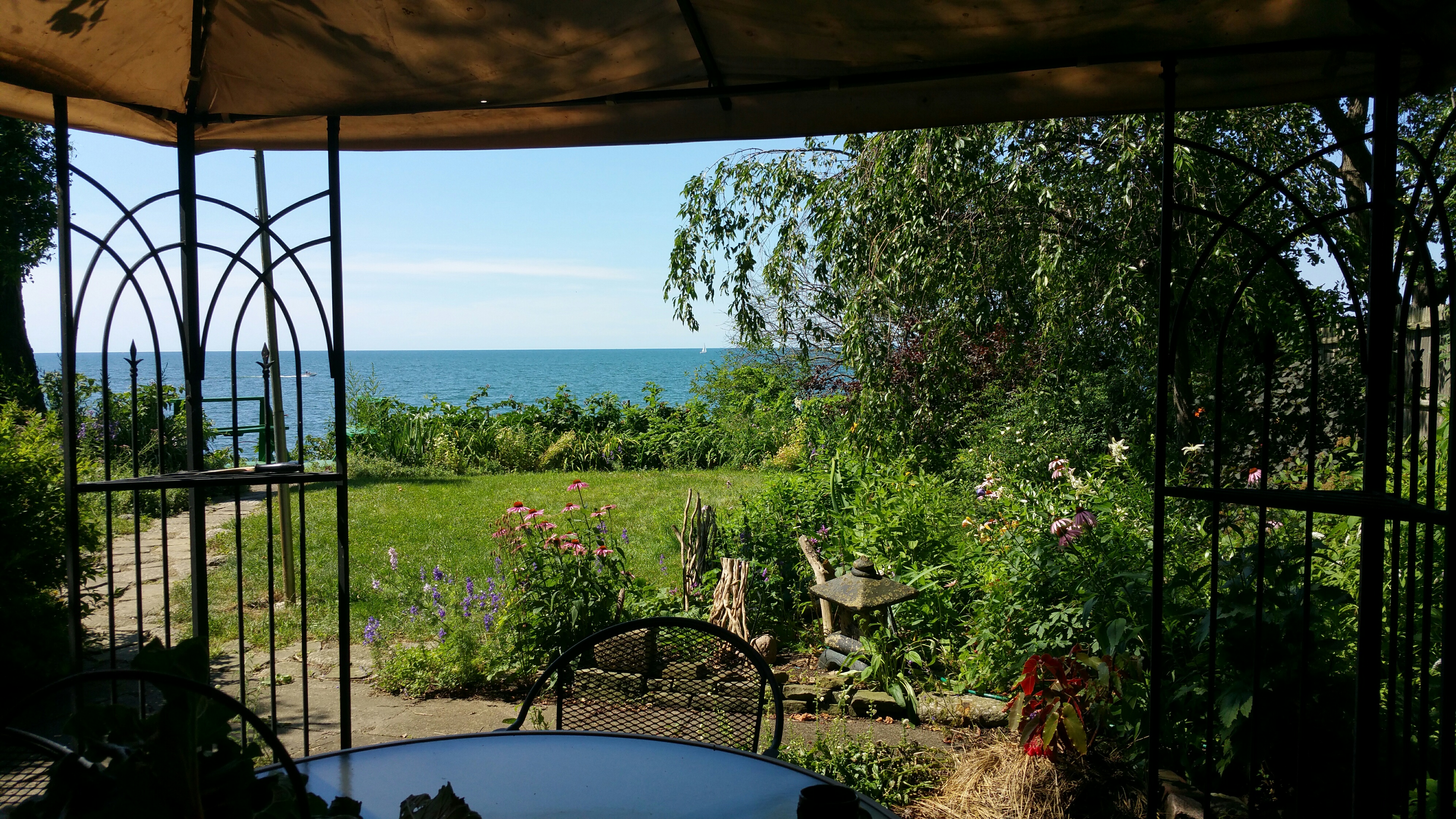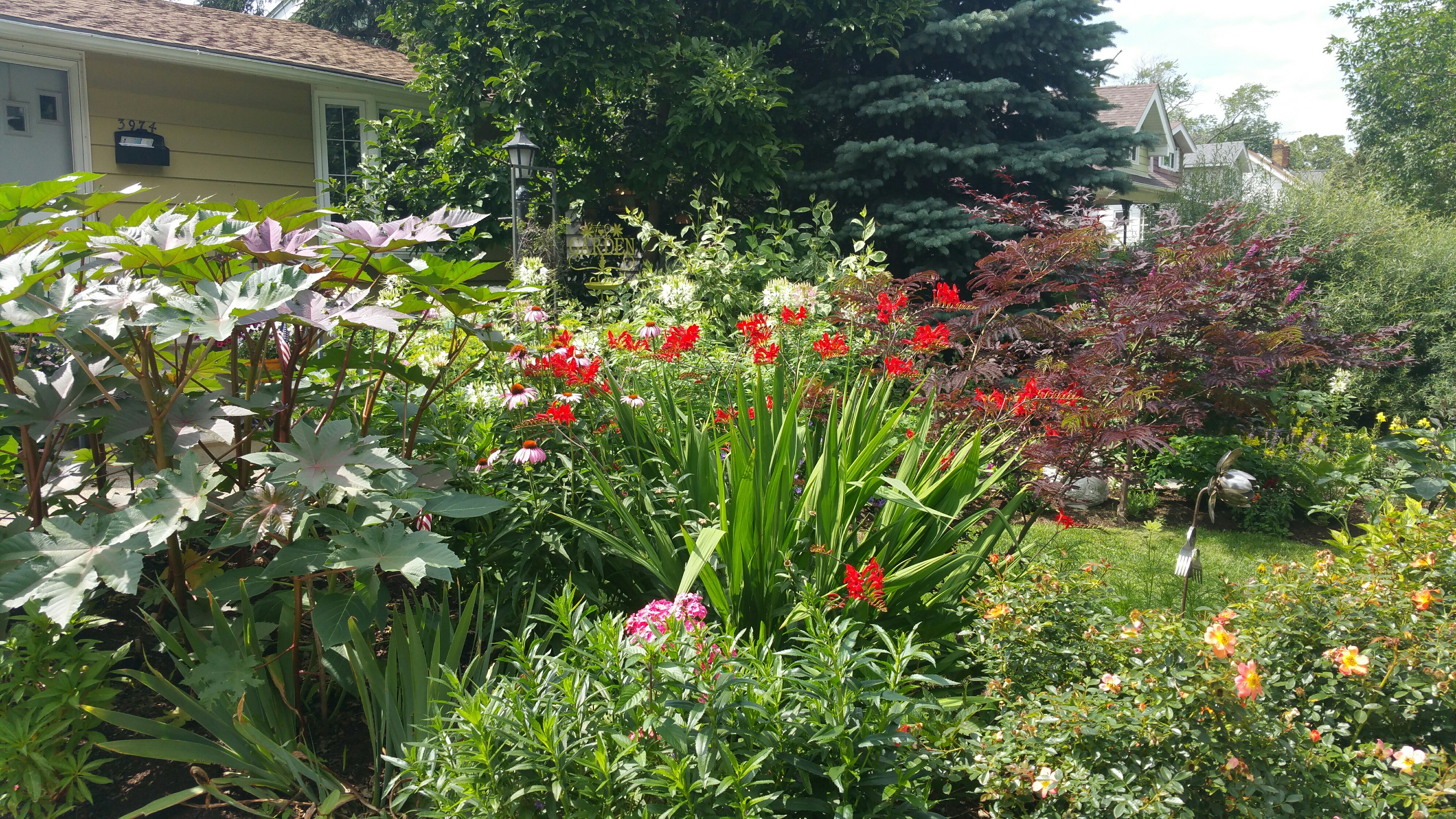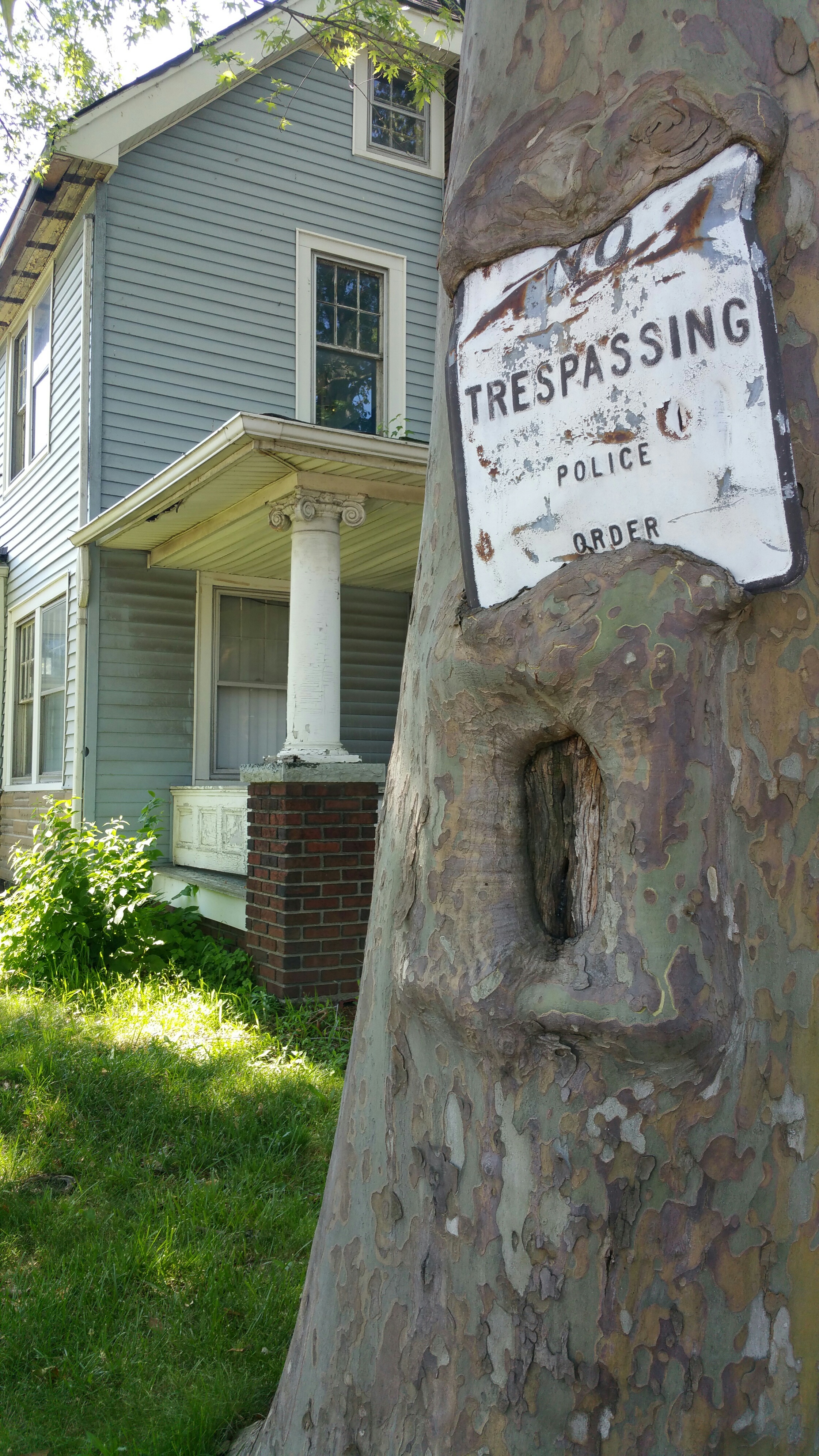by Lois RoseWatching the seasons unfold this year after the unusual spring weather has been exciting and puzzling.Going back four winters, I am reminded that 2013-14 and 2014-15 were very difficult in terms of extreme and sustained cold. Many plants that had survived in my garden for decades were damaged severely by the first of these winters. The second dealt a glancing blow but it did not do as much damage.As an example my fig trees which had been in the ground for twenty years and had produced five hundred figs in the summer of 2013, were knocked to the ground. They produced new branches but no figs in 2014. Last year, 2016, I had a few dozen figs and this year my considerably larger trees are covered with baby figs, much earlier than usual, on their way to ripening in the fall. Everything in the yard seems to have come in two to three weeks early.
My hardy orange trees, Poncirus trifoliata have a lot of fruit now…small so far, fuzzy green oranges, the first since 2013. There were flowers last year but no fruit. Again, they flowered a few weeks earlier than usual.
Looking at my other fruit crops, black and red currants started ripening in mid June,weeks ahead. Raspberries were similarly ahead.
I have been doing some research online and asking friends from OSU to find some explanations for the patterns which reflect the weather conditions in this part of Ohio this spring. The mild winter, second in a row, is the foundation of the story..very warm temperatures in January and again in February started the ball rolling. Plants that had completed their chill hours…needed to set them up for their normal spring routines…were thrust into advancing buds which formed last summer and fall early. Maple trees started to open their signature red flowers a month earlier than usual. Soil temperatures rose early (get a soil thermometer if you want to be on top of this) and crab grass was ready to germinate in early to mid March (time for pre germination treatment) earlier than usual. Growing degree days (http://www.oardc.ohio-state.edu/gdd/ moved ahead quickly by March. Then some cool and cold weather slowed things down. May have produced some very cold weather (not unusual) which damaged various plants, especially those that had started to open buds or were in flower. The damaging cold was defined by temperatures at or below freezing for many hours. Michigan as well as Ohio received a cold spell on May 8 and 9. But depending on the specific place, its altitude, proximity to water, etc.,the results were varied.
Depending on your garden niche, proximity to the cold lake, how far to the east or west and how high above the lake, snow cover…all of these things contributed to the damage or lack thereof to our plant material.Friends have observed a good crop on their berries, and also on hibiscus, roses, and many other flowers and shrubs and trees.I am speculating that the two mild winters, generous amount of rain this spring compared with the three month drought last year…plus the recovery of many plants after two damaging winters..has resulted in this year’s bounty.
In my yard, I see very little damage after the cold spells in March and May which included freezing and snow after many plants had been exposed to the warm air and warm ground earlier than usual. Magnolia stellata had buds covered in frost. Daylilies were bent to the ground as were helleboresand many other perennials. Yet my magnolia blossomed well, and the hellebores were very floriferous.
On the whole it seems that the outcome has been favorable despite the gyrations and surprises of the spring. Cannot wait to see what is going to happen next year!
Monthly Archives: July 2017
Dear Fellow Ents
by Elsa Johnson
It’s not just our trees that are dying but trees everywhere, headlines an article in The Guardian (issue of 19 September 2016, written by Oliver Milman in Oahu and Alan Yuhas in San Francisco).
In Hawaii, on the big island, in 2010, the iconic ohi’a trees – a rainforest evergreen — started dying at an astonishing rate. After almost six years nearly 50,000 acres of native forest on the big island are infected, and there is the potential for major deforestation to a whole family of metrosideros trees and shrubs of the Pacific. It is caused by a beetle carrying a pathogen (dark creeping shades of Moana!).
In other areas of the tropics, disease threatens banana plantations, coffee growers are dealing with fungal attacks that reduce yield and kill the plants that produce the coffee bean, and citrus greening is a threat to citrus growers worldwide.
In California an invasive pathogen called Sudden Oak Death – distantly related to the cause of the 19th century Irish potato famine – is infecting hundreds of different plants, including redwoods and ferns (but …but…it’s called oak death): 66 million trees have been killed in the Sierra Nevada alone. SOD is caused by phytophthora ramorum. Despite its name the pathogen slowly saps the life from oaks over two to five years. It is spread mostly through water, like rain splashing off an infected leaf, or wind driven rain that can carry the pathogen for miles. Whole mountainsides have died.
In the Midwest, from Texas to Minnesota and east into Ohio, trees are dying. Ashes succumb to ash borer, oaks succumb to oak wilt (as we know to our regret through the loss of old growth red oaks in Forest Hill Park), caused by the fungus Ceratocystic fagacearum, and to opportunistic insects like the Two-lined Chestnut Beetle. And now something is affecting our native beeches. Meanwhile In the Pacific northwest, bark beetles and pine beetles are killing trees. Five years of drought starved trees of water and weakened their defenses. The beetles that used to be held in check by wet winters now have more time to roam beyond their normal territories, expanding from British Columbia to the Yukon border. Meanwhile, across the Atlantic, the iconic English and European beech forests are also threatened by climate change, especially drought. For us here, weather – mild winters possibly? – may not kill off the two lined chestnut borers the way a bitterly cold winter would, hastening their spread.
What seem like small changes to us – the shift of a degree or two, the lengthening of fall and the earlier spring onset of spring by a just few weeks (which feels beneficial to us – who doesn’t appreciate a milder winter around here?) — can have profound negative cascading affects to ecosystems which depend for communal health on everything living in a balanced equilibrium of competing and cooperating interconnected organisms, both above and below ground. Events like a long and too-wet spring, followed by a longish period of drought, such as we had here in northeast Ohio last year, which affected the prairie states even more severely, stress trees, leaving them vulnerable. They live lives many times longer than ours, but are slow to adapt.
Alas.
These changes to climate – that seem so unremarkable to us, or even good as we enjoy that mild winter day – naturally affect all components of an ecosystem, and there are parameters beyond which any ecosystem becomes destabilized and the natural equilibrium of the healthy ecosystem is sent awry. I believe we laypeople inadequately appreciate this. Probably new equilibriums will be established over an extended time, but we, personally, probably will not live to see it. Recent reports suggest as much as 80% of species may be on a path to extinction…. and we? We are who understand – we who care? Galadriels, sadly looking at the world we love, knowing that much in it that is wonderful will pass away.
This is what tree death looks like.
A Feast for the Eyes: GardenWalk Cleveland 2017
by Elsa Johnson, Ann McCulloh and Catherine Feldman
This edition of Gardenopolis Cleveland marks our third summer on the beat. One of our first stories was about GardenWalk Cleveland …and here we are again! Last year there was no garden walk, but they were back up last weekend and even added an additional territory, North Collinwood. Your intrepid editors Catherine Feldman, and moi, Elsa Johnson, drove up to what felt to us like another country. …. perhaps somewhere on the Baltic? We got out of our car on a road where the houses all look out over a private park over looking our inland sea…breezes we’re blowing. It was a small place of summer heaven. A treasure! Why don’t more people know this is here? ! Enjoy,…
